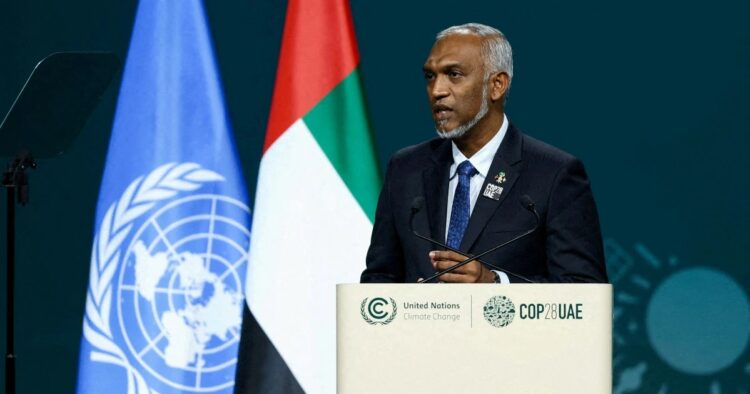Maldivians headed to the polls for parliamentary elections, a pivotal moment for President Mohamed Muizzu on Sunday, whose policies are closely watched by Bharat and China as they compete for influence in the archipelago nation.
The Maldives holds a strategic location in the Indian Ocean, making it a sought-after prize for both Bharat and China, each vying for a foothold in the region.
President Muizzu’s election last year heightened the rivalry between Bharat and China. He has taken a pro-China stance and moved to remove Bharatiya troops stationed on one of the country’s islets, further escalating tensions between the two regional powers.
However, securing a majority in Parliament will be an uphill battle for Muizzu. Some of his allies have distanced themselves, and new parties have entered the race, adding complexity to the political landscape.
A total of six political parties and independent groups are participating in the elections, fielding 368 candidates for the 93 parliamentary seats. This represents an increase of six seats from the previous Parliament to accommodate population growth.
Approximately 284,000 eligible voters were expected to cast their ballots, with tentative results anticipated to be announced late Sunday.
Tensions between Bharat and the Maldives escalated further when Bharatiya social media activists launched a boycott campaign against Maldives tourism. This was in response to derogatory statements made by three Maldivian deputy ministers about Bharatiya Prime Minister Narendra Modi.
As a result, the number of Bharatiya tourists visiting the Maldives has declined, dropping the country from being the top source of foreign visitors to sixth place, according to recent Maldivian government statistics.
Also, in an effort to bolster ties with China, Muizzu visited the country earlier this year and negotiated an increase in the number of tourists and inbound flights from China.
Moreover, in 2013, the Maldives joined China’s “Belt and Road” initiative, aligning itself with China’s efforts to expand trade and influence across Asia, Africa, and Europe through infrastructure development projects.

















Comments